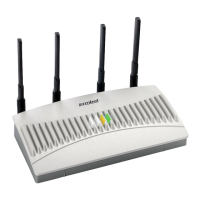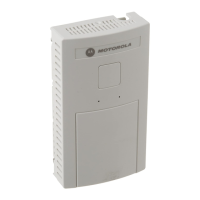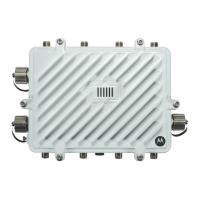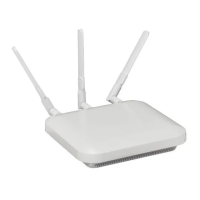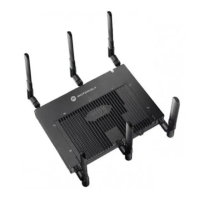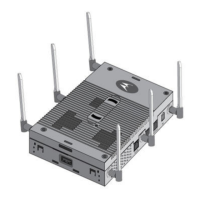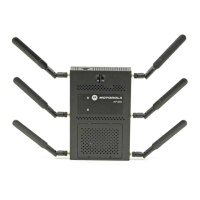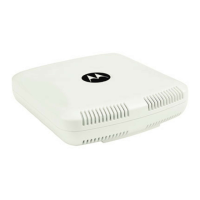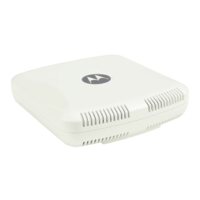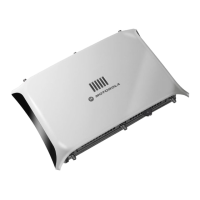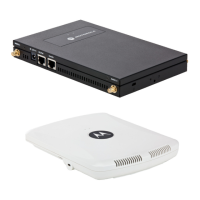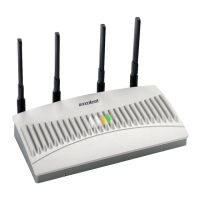
Do you have a question about the Motorola AP-51XX and is the answer not in the manual?
| Category | Wireless Access Point |
|---|---|
| Product Family | AP-51XX |
| Wireless Standards | 802.11 a/b/g |
| Frequency Band | 2.4 GHz, 5 GHz |
| Security Features | WPA, WPA2, 802.1X |
| Power over Ethernet | 802.3af |
| Operating Temperature | 0°C to 50°C |
| Storage Temperature | -40°C to 70°C |
| Humidity | 5% to 95% (non-condensing) |
Details new features introduced in the latest access point firmware release (version 2.0).
Lists features carried forward from previous releases, covering various operational aspects.
Lists essential verification steps before installing AP-5131 or AP-5181 models.
Details the various orderable configurations and accessory combinations for AP-5131.
Provides guidelines for optimal access point placement to ensure performance and coverage.
Describes the available antenna suites and options for AP-5131 and AP-5181 models.
Details the available power options for AP-5131 and AP-5181 models, including power injectors.
Provides instructions for various mounting options for the AP-5131, including desk and wall installations.
Provides instructions for mounting the AP-5181 to a pole or wall.
Guides through making cable and power connections before mounting the access point.
Provides steps for basic setup using the Java-based Web UI, including login and initial settings.
Covers setting system name, location, country, and restoring defaults.
Details how to configure discovery methods and connection mediums for Adaptive AP adoption.
Covers importing and managing CA certificates for VPN access and authentication.
Explains how to configure SNMP for device management and network monitoring.
Provides instructions for updating access point firmware to the latest version for full functionality.
Details how to enable LAN interfaces, assign names, and configure Ethernet port settings.
Covers WAN IP configuration and Point-to-Point Protocol over Ethernet (PPPoE) parameters.
Guides on creating, editing, and deleting WLANs for network requirements.
Outlines available security options for access point logins, authentication, and encryption.
Explains how to enable or disable configurable firewall filters for security.
Guides on configuring IPsec tunnels for secure traffic routing between networks.
Details how to detect and manage unauthorized access points operating within the network.
Covers configuring external Radius and LDAP servers for user database information and authentication.
Displays real-time statistics for monitoring the access point activity through its WAN port.
Monitors the activity of the access point’s LAN1 or LAN2 connection for network traffic.
Provides overview statistics for active WLANs, including MU count and throughput.
Displays high-level information for radios enabled on the access point, like type and associated MUs.
Displays overview statistics for mobile units (MUs) associated with the access point.
Provides instructions for accessing the Command Line Interface via serial port or Telnet.
Lists and describes common administrative commands for navigating and managing the CLI.
Details commands for configuring network settings, including LAN, WAN, Wireless, Firewall, and Router.
Lists commands for managing system parameters such as restart, settings, certificates, SNMP, and logs.
Covers commands for displaying statistics related to WLAN, MU, LAN, WAN, and APs.
Explains the mesh networking functionality and modes of operation for AP-51xx.
Details the steps required to configure LAN, WLAN, and Radio settings for mesh support.
Provides instructions for setting up mesh functionality using three access points in scenarios.
Introduces Adaptive AP (AAP) functionality and its management via a wireless switch.
Explains how to configure and manage AAPs like thin access points from a wireless switch.
Outlines the two methods for AP-51XX to discover and connect to a switch for configuration.
Details manual methods for adopting an AAP using Static FQDN or Static IP addresses.
Explains how an AAP obtains its configuration from the switch and the process involved.
Provides detailed physical characteristics for AP-5131 and AP-5181 models.
Details the radio characteristics, including operating channels and receiver sensitivity.
Describes the antenna suites and components available for AP-5131 and AP-5181 models.
Provides instructions for configuring DHCP or BootP servers for automatic firmware/config updates.
Covers common questions and configurations related to VPN tunnels.
Lists web support sites for product downloads and manuals.
Provides contact information for obtaining additional Motorola product information.
